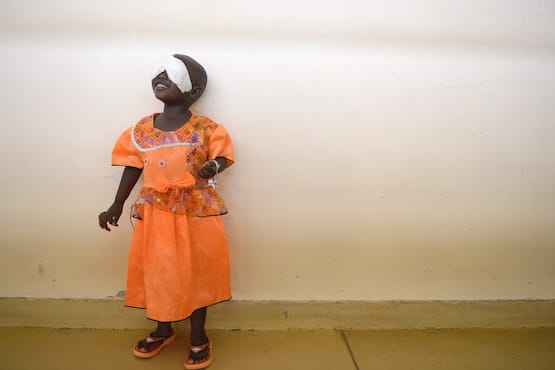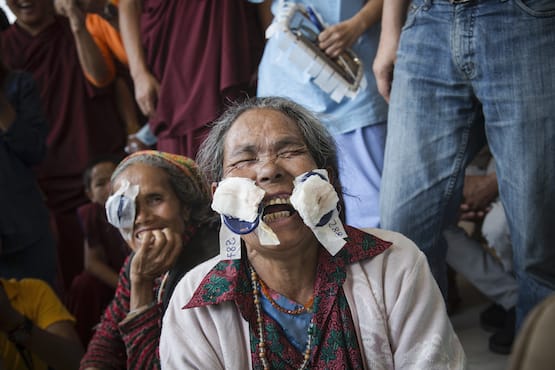The problem: avoidable blindness and visual impairment
At least 2.2 billion people around the world have a vision impairment, of whom at least 1.1 billion have a vision impairment that could have been prevented or is yet to be addressed, according to the World Health Organization. [1]
Blindness disproportionately impacts the world’s poor: about 90 per cent of those affected live in low-income and middle-income countries. [2] A combination of malnutrition, poor water quality, lack of sanitation, and inadequate health care and education contributes to blindness, perpetuating the cycle of poverty and threatening lives. However, we can fix the problem. More than 90 per cent of vision loss is preventable or treatable and we can address it using existing highly cost-effective interventions. Blindness and vision loss affect people at all stages of life, with young children and older people being particularly affected.
There is significant inequity in eye health with women, people in rural areas, and ethnic minority groups more likely to be blind or have vision impairment.

The solution: low-cost cataract surgeries and vision care
In many cases, awareness of eye health conditions and access to eye care can prevent or identify vision problems, while inexpensive medication or surgery can restore a person’s sight and livelihood. Cataract is the leading cause of global blindness and visual impairment. Cataract surgery is affordable in low and middle income countries and can take as little as 10 minutes to perform — it’s an extremely cost-effective way to dramatically improve people’s lives.
How the Fred Hollows Foundation works
The Fred Hollows Foundation works in more than 25 countries throughout Africa, South Asia and the Middle East, South East Asia, Australia and the Pacific. Their priority is to strengthen health systems and work with communities to improve their own eye health. They do this through life-changing surgeries and treatments, training doctors and health workers, generating new ideas, and pushing for change at all levels – from local to global.
In 2019/20, The Fred Hollows Foundation performed 824, 049 eye operations and treatments, and treated nearly 26.3 million people with antibiotics for trachoma.

The Foundation works in partnership with local organizations to train health workers and build and upgrade facilities, often in remote areas. In 1994, they helped establish factories in Nepal and Eritrea to manufacture a low-cost intra-ocular lens (IOL) used in cataract surgery. These IOLs could be produced for US$5 instead of the market cost of US$150. To date, more than 7.5 million IOLs have been produced.
They are involved in all aspects of eye care, supporting training, facilities, machinery, expertise, research, and advocacy. They put particular emphasis on training and empowering local people as the key to sustainable change.
